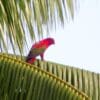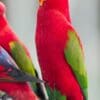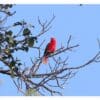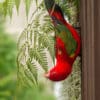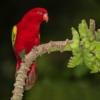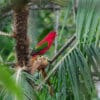Chattering Lory
Also known as:
Scarlet Lory, Yellow-backed Lory (L.g. flavopalliatus)
Also known as:
Scarlet Lory, Yellow-backed Lory (L.g. flavopalliatus)

Lorius

garrulus
Size:
30 cm (11.7 in)
Weight:
180-250 g (6.3-8.75 oz)
Subspecies including nominate:
three: L.g. garrulus, L.g. flavopalliatus, L.g. morotaianus
Colour Adult:
L.g. garrulus: Both adults in general red, with scapulars having darker tint; yellow patch on mantle absent; green thighs and wings; yellow bend of wing and underwing coverts; pink/rose underwing stripe; red tail with black/green tip. Beak orange. Eye ring grey, eye orange/red.
L.g. flavopalliatus: Both adults as in garrulus but with yellow patch on mantle; brighter green on wings.
L.g. morotaianus: Both adults as in flavopalliatus but with yellow patch on mantle washed with green, duller and less extensive; darker green wings.
Colour Juvenile:
L.g. garrulus: As in adults but with brownish beak, paler grey/white eye ring and brown eye.
L.g. flavopalliatus: As in adults.
L.g. morotaianus: As in adults.
Call:
Calls are described as loud, nasal and quavery. Also makes braying sounds. Territorial calls are raucous, two-syllable horn-like notes given singly or repeated two or three times.
More Information:
WPT-supported project – Fighting Parrot Trafficking in Indonesia
Content Sources:
CITES
Avibase
BirdLife International
Cornell Lab of Ornithology/Birds of the World
Parrots: A Guide to Parrots of the World, Juniper and Parr, 1998
Parrots: Status Survey and Conservation Action Plan 2000-2004, Snyder, McGowan, Gilardi and Grajal, 2000.
Parrots of the World, Forshaw and Cooper, 1977. 2010 edition
Parrots of the World, Forshaw, 2006.
Lexicon of Parrots, Thomas Arndt.
Parrots in Aviculture, Low, 1992.
Captive Status:
Formerly common, now less so.
Longevity:
28-32 yrs
Housing:
Enclosure with drain in floor (sloping concrete with drain), or suspended cage over concrete floor.
Diet:
Commercial or homemade nectar (baby cereal, lactose-free; honey and malt extract or molasses, mixed with filtered water, made fresh once or twice daily); fruit once or twice daily: apple, pear, orange, banana, cactus fruits; one or more vegetable items daily: carrot, fresh corn, tinned sweet corn (unsalted), green leaves such as Swiss chard, lettuce or dandelion; rearing food made from hard-boiled egg, wholegrain bread and carrot, all ground to crumbly consistency.
Enrichment:
Provide daily baths, necessary because of nectar diet. Provide lots of bird-safe (non-toxic and unsprayed) flowering branches for perching and chewing.
Nest Box Size:
Diagonal box 16″ x 8″ x 12″ (40.6 cm x 20.3 cm x 30.5 cm).
Clutch Size:
2
Fledging Age:
10-11 weeks
Hatch Weight:
—
Peak Weight:
—
Weaning Weight:
—
World Population:
Unknown, rapidly decreasing.
IUCN Red List Status:
Vulnerable
CITES Listing:
Appendix II
Threat Summary:
A BirdLife “restricted-range” species. The main threat is trapping for the wild bird trade; several thousand were taken annually in the 1980s and early 90s. Legal trade ceased in 2003 but illegal exploitation continues. Tree harvesting in the area has become more intensive in the twenty-first century, with mainly large nesting trees being taken.
Range:
L.g. garrulus: Halmahera and Widi Islands, N Moluccas.
L.g. flavopalliatus: Bacan and Obi, N Moluccas.
L.g. morotaianus: Morotai and Rau, N Moluccas.
Habitat:
Found in upland forested areas up to 1300 m (4264 ft). Most commonly reported in primary and mature secondary forests away from settlements.
Wild Diet:
Feeds on pollen, fruits, nectar and flowers including coconut.
Ecology and Behaviour:
Reported in pairs. Noisy and conspicuous in flight but are difficult to spot while feeding in forest canopy.
Clutch and Egg Size:
2 elliptical eggs, 26.0 x 22.0 mm (1 x 0.8 in)
Breeding Season:
June, with young fledged by October-November. Nest is in woody swelling in tall tree.
Related Links:
—
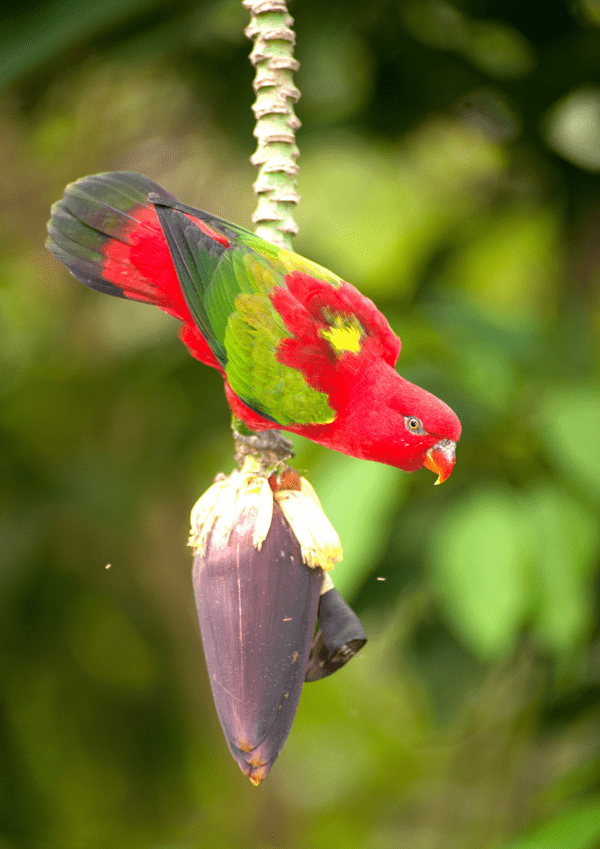
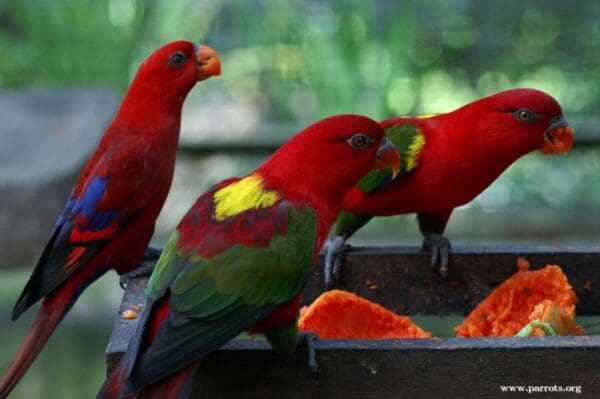
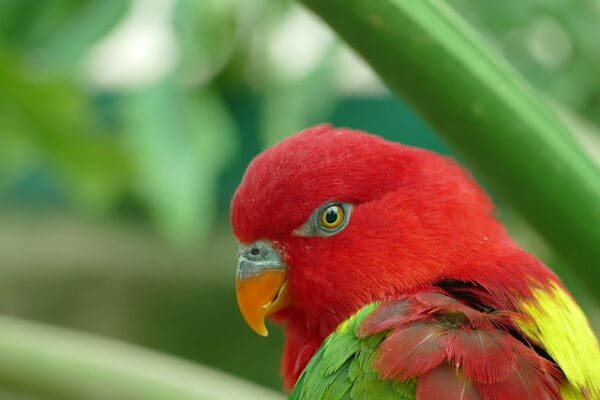
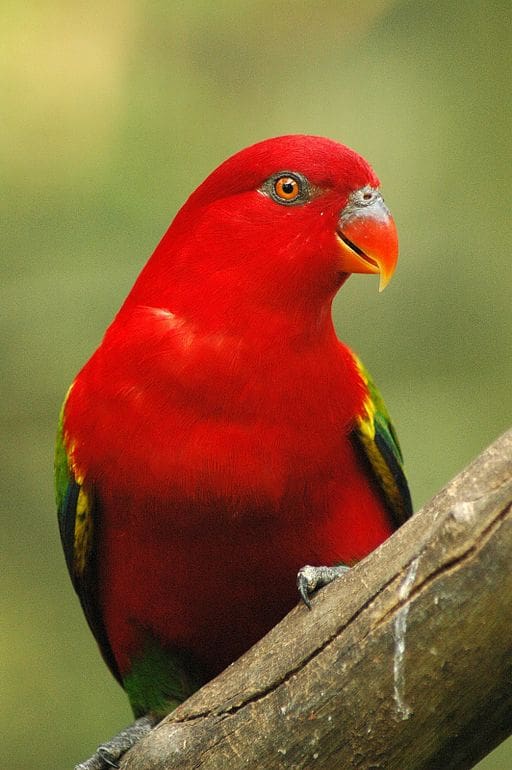
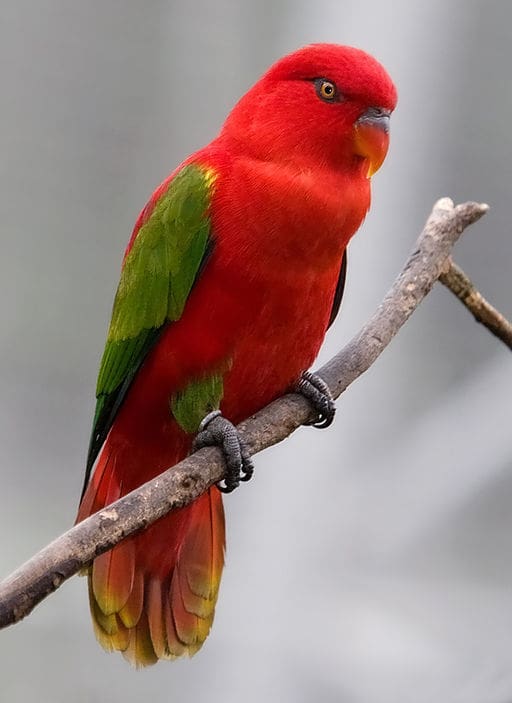
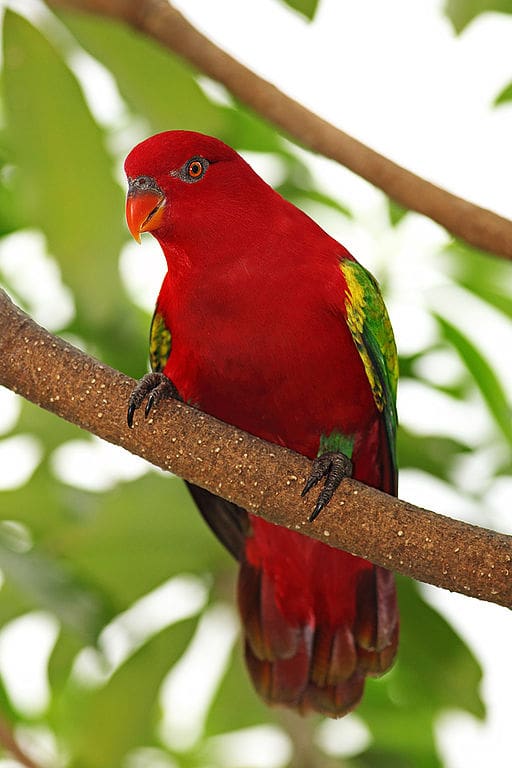
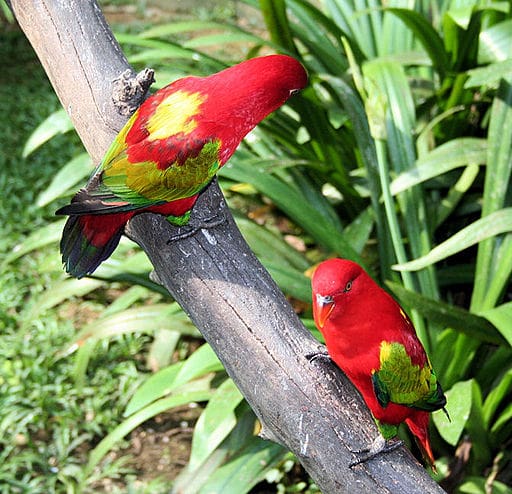
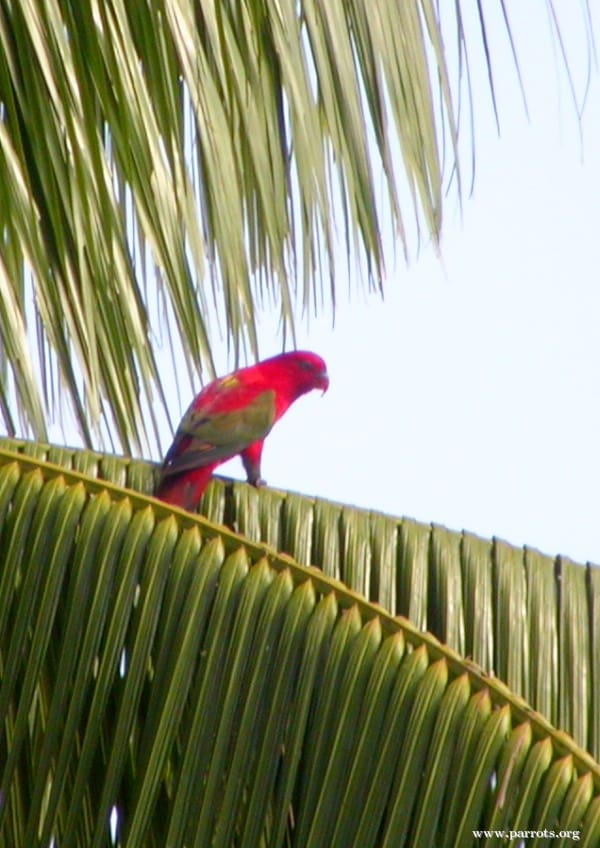
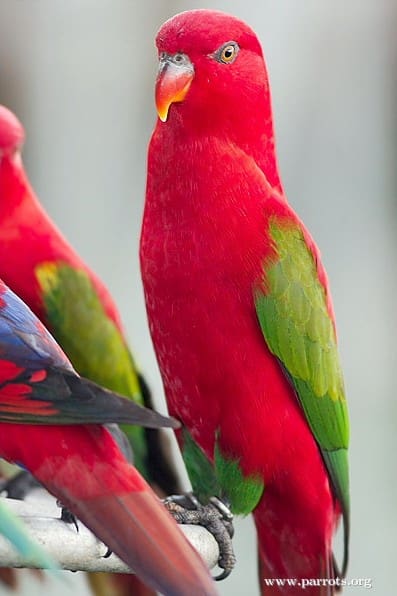
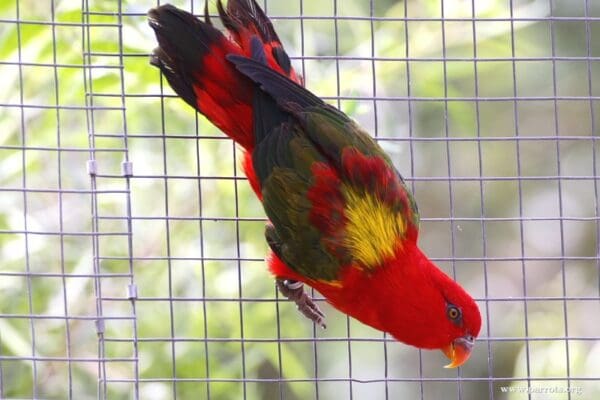
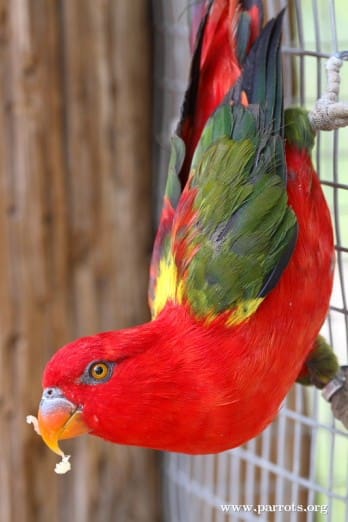
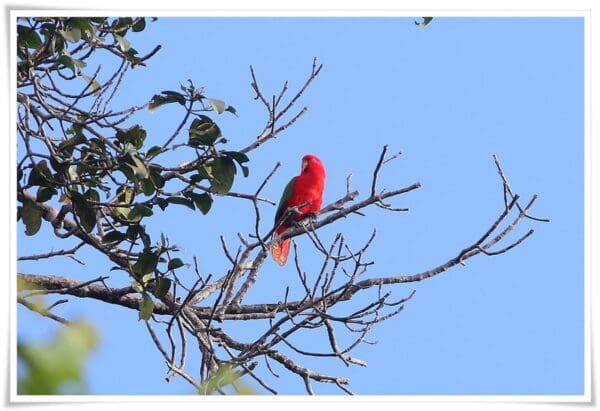
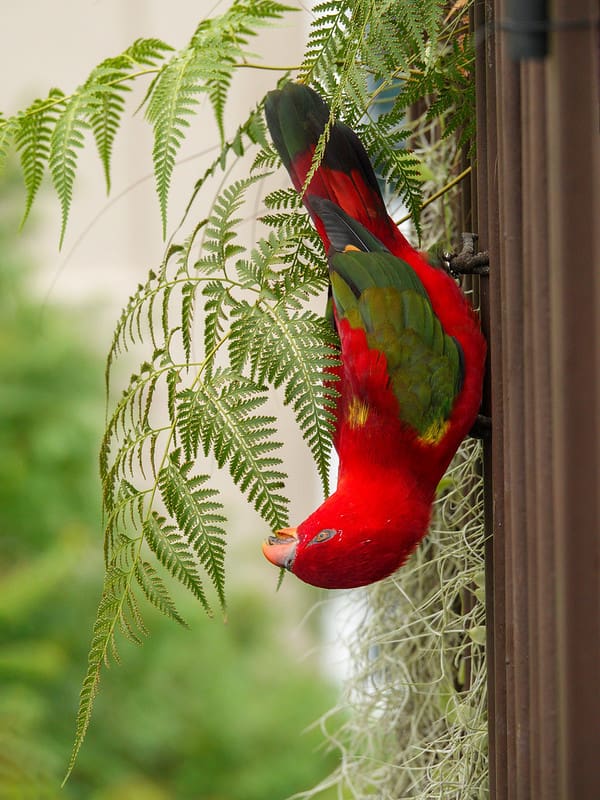
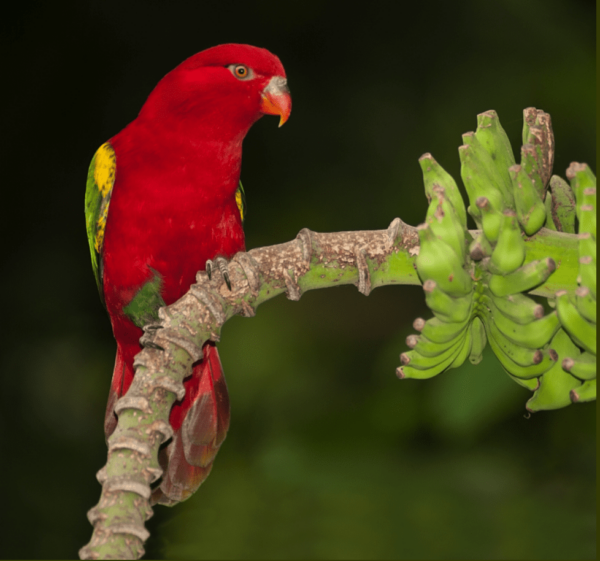
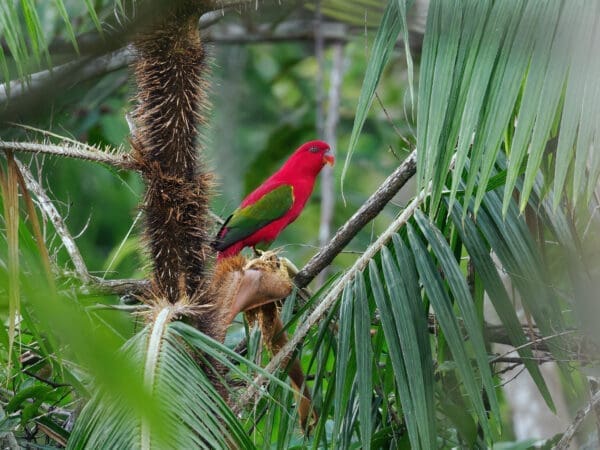

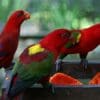
![Chattering Lory
© Raphael Anjou [CC BY-SA 2.0] via Flickr A wild Chattering Lory closeup](https://parrots.org/wp-content/uploads/2024/04/wpt_Chattering-Lory_1245-14-100x100.jpeg)
![© Wayne Deeker (Picasa Web Albums) [CC BY 3.0] via Wikimedia Commons A Chattering Lory perches on a branch](https://parrots.org/wp-content/uploads/2023/01/wpt_Chattering-Lory_1245-12-100x100.jpg)
![© Doug Janson [CC BY-SA 3.0] via Wikimedia Commons A Chattering Lory perches on a limb at Jurong Bird Park](https://parrots.org/wp-content/uploads/2023/01/wpt_Chattering-Lory_1245-10-100x100.jpg)
![© Benjamint444 (Own work) [GFDL 1.2] via Wikimedia Commons A wild Chattering Lory perches on a limb](https://parrots.org/wp-content/uploads/2023/01/wpt_Chattering-Lory_1245-9-100x100.jpg)
![© Mike Powell (originally posted to Flickr as KL Bird Park - 2) [CC BY-SA 2.0] via Wikimedia Commons Chattering Lories perch on a branch at Kuala Lumpur Bird Park](https://parrots.org/wp-content/uploads/2023/01/wpt_Chattering-Lory_1245-8-100x100.jpg)
